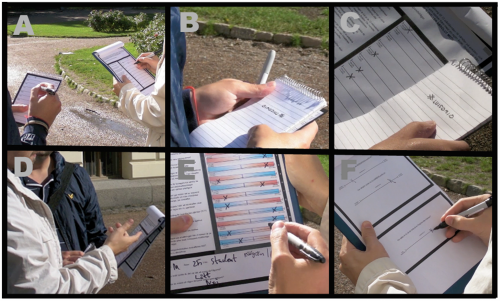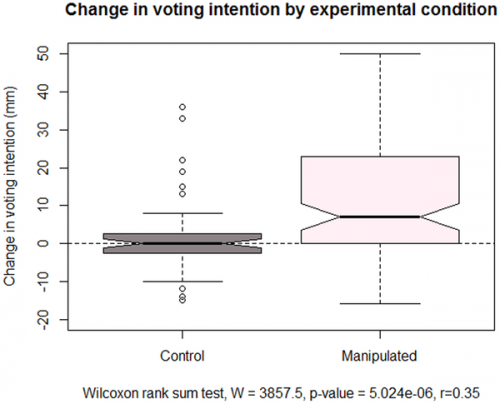April 11, 2013 report
Study on choice blindness finds voters more malleable than thought (w/ video)

(Phys.org) —Cognitive scientists at Lund University in Sweden have found that prospective voters in political elections are perhaps more open to opposing views than political pundits have claimed. The team describes in their paper published in PLOS ONE, how they rigged questionnaires filled out by random prospective voters to slant away from their stated political views and found that in many cases those that filled out the questionnaire were willing to agree with the forged results.
It's become a matter of fact in political science—most people have made up their minds about issues and candidates long before election-day, thus, it behooves those trying to sway voters to concentrate mainly on those still on the fence. But is it true? The team from Lund came up with a way to test the theory—they created questionnaires and then went out into the streets to enlist volunteers to take them. But they had a trick up their sleeve, the questionnaire-giving process was rigged.
In all 163 people of various ages consented when approached by researchers—each was asked to fill out a questionnaire (if they indicated first that they intended to vote in an upcoming election). Prior to filling it out, each volunteer was asked about their political affiliation—then as each filled out the questionnaire form, the researcher, who was watching what they marked, filled out an identical form with different answers—specifically to slant in opposition to the what the volunteer marked. As the volunteer finished his or her survey, the researcher hid the rigged form beneath a notebook and then (unbeknownst to the volunteer) very neatly glued it in place over the top of the volunteer's original. The researcher then asked the volunteer to review and discuss the answers given as both viewed the questionnaire results. Surprisingly, only 22 percent of the volunteers noticed that their answers had been altered. Even more surprising was that fully 92 percent of the volunteers accepted the altered form as the one they'd filled out and actually endorsed what they'd appeared to have written. When asked to fill out a voter intention form afterwards, 48 percent of the volunteers agreed with the altered results, indicating they'd changed their minds about which way they were going to vote.

This little experiment doesn't prove that voters can be easily swayed of course—the volunteers might have changed their minds back to their original position before the election, or been hesitant in confronting the researchers about what they'd thought they'd written. But it does suggest that more study needs to be done regarding voter allegiance and whether the current strategy of focusing on so-called undecided voters, is actually the best course of action for politicos.
More information: Hall L, Strandberg T, Pärnamets P, Lind A, Tärning B, et al. (2013) How the Polls Can Be Both Spot On and Dead Wrong: Using Choice Blindness to Shift Political Attitudes and Voter Intentions. PLoS ONE 8(4): e60554. doi:10.1371/journal.pone.0060554
Abstract
Political candidates often believe they must focus their campaign efforts on a small number of swing voters open for ideological change. Based on the wisdom of opinion polls, this might seem like a good idea. But do most voters really hold their political attitudes so firmly that they are unreceptive to persuasion? We tested this premise during the most recent general election in Sweden, in which a left- and a right-wing coalition were locked in a close race. We asked our participants to state their voter intention, and presented them with a political survey of wedge issues between the two coalitions. Using a sleight-of-hand we then altered their replies to place them in the opposite political camp, and invited them to reason about their attitudes on the manipulated issues. Finally, we summarized their survey score, and asked for their voter intention again. The results showed that no more than 22% of the manipulated replies were detected, and that a full 92% of the participants accepted and endorsed our altered political survey score. Furthermore, the final voter intention question indicated that as many as 48% (±9.2%) were willing to consider a left-right coalition shift. This can be contrasted with the established polls tracking the Swedish election, which registered maximally 10% voters open for a swing. Our results indicate that political attitudes and partisan divisions can be far more flexible than what is assumed by the polls, and that people can reason about the factual issues of the campaign with considerable openness to change.
Journal information: PLoS ONE
© 2013 Phys.org


















